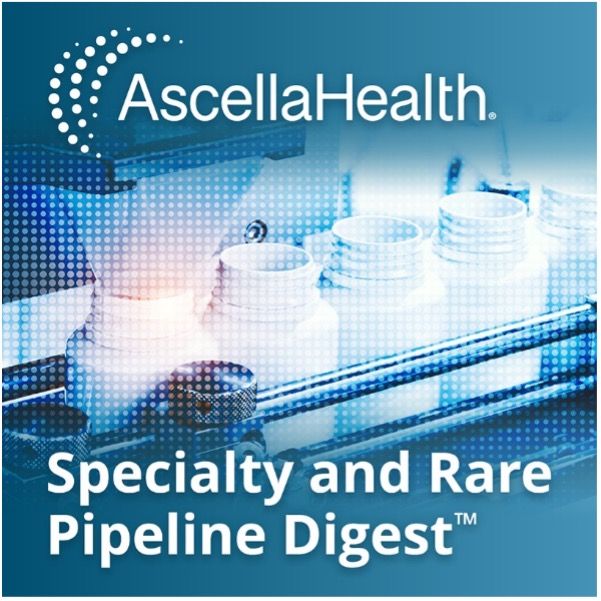
Navigating the Challenges of Rare Disease Therapies
Understanding the Valuable Role of a Specialty Pharmacy Solutions Provider

When the FDA approved the world's first medicine based on CRISPR gene-editing technology, a groundbreaking treatment for sickle cell disease that delivers a potential cure for people born with the chronic and life-shortening blood disorder, the authorization signaled what industry leaders worldwide call a "scientific triumph." Marking the beginning of a new era of potentially curable genetic medicines for inherited diseases, the first CRISPR therapy establishes a new industry benchmark.
________________________________________________
What is CRISPR?
CRISPR is a way to change specific areas of DNA. The system was discovered in bacteria, which uses it as an immune system to fend off attacks by viruses. Bacteria store parts of their enemy viruses' DNA so they can cut the viruses' genes and defend against them. A CRISPR editing system has two parts: a "guide RNA" sequence and a pair of molecular "scissors." The guide sequence, like a Dewey decimal number for DNA, leads the scissors to a specific spot on the double helix and the scissors cut the strand of DNA there, inactivating that gene. More recent technologies allow CRISPR systems to insert new DNA into this site or swap out individual nucleotides — the "letters" in the DNA sequence.
________________________________________________
Approvals of expensive gene therapies for rare disorders are hitting an all-time high. This past year has seen more gene therapies approved by the FDA than the previous five combined. Today, more than 90% of rare diseases still have no treatment.
Rapid advancements in the field continue, with more than 2,000 therapies in development worldwide. A robust future is predicted, as recent research suggests that the number of gene therapies on the market is likely to increase to over 60 by 2030 and today's $5.2 billion gene therapy market is estimated to grow tenfold by 2031. In 2024 alone, up to 21 cell therapy launches and as many as 31 gene therapy launches—including more than 29 adeno-associated virus (AAV) therapies—are expected.
However, life science and biotechnology companies still face significant clinical, manufacturing, regulatory and commercialization challenges, as specialty product innovation and the introduction of CGTs are increasingly viewed as a journey that begins during pre-commercialization and continues throughout the product life cycle.
As a result, they increasingly rely upon the resources of a single-source specialty pharmacy (SP) and healthcare solutions partner like AscellaHealth: a resource with robust capabilities to support and manage every phase of a manufacturer's approach – including contractual arrangements with all major commercial payers and self-insured employers.
Value of an SP Partnership
All stakeholders in the SP ecosystem place high value on partnering with a resource that provides complete end-to-end solutions that address the unmet needs of patients, manufacturers and payers. Ideally, this partner is able to pivot to changes in the market and has the extensive experience and in-depth expertise required to address the unique, challenging issues associated with serving individuals and families facing complex conditions or rare disease.
Look for the support of an organization that can tackle critical success factors, keeping patients at the center of all activities and achieving the goals of enhanced medication access, optimized clinical outcomes and a better quality of life for patients and family caregivers.
- Start Early During Pre-Commercialization
It's never too early in the research and development (R&D) process to identify and measure a product's projected clinical outcomes in order to meet the needs and expectations of payers and life science manufacturers. With pre-commercialization, life science manufacturers benefit from proactive planning and early market access strategies supporting a successful product launch. For CGTs, pro-active planning and a longer runway are required to support optimal health plan coverage and pricing for expensive therapies. Your SP solutions partner will help to formulate and articulate a strategy that leads to optimal pricing and payer reimbursement on the day of launch.
- Be Prepared: Product Launch, Market Access
Since manufacturers may not have in-house capabilities for implementing programs that tackle the unique challenges and complexities of specialty product launches, a single source partner eliminates the need to engage with multiple vendors in order to address and accelerate all processes, including:
Market access strategy and payer negotiations: Ensure patient access to therapy and determine pricing and reimbursement at the time of launch.
Gather the right clinical data: Data such as dosing regimen, treatment duration, and route of administration provide the underpinning for developing a safety profile, tracking outcomes and assessing patient adherence and compliance with treatment. Benchmark prices to create a holistic projection of the product's durable pipeline success, number of patient lives affected, and the direct financial impact on the payer.
Develop a compelling value proposition and narrative: Identify the unmet needs of all stakeholders, communicate the burden of the disease and highlight the effectiveness of the therapy.
Account for patient adherence and compliance with treatment: This impacts short- and long-term product utilization, quality and length of life, health outcomes and overall healthcare costs for patients who may require prolonged medical care.
- Ensure Affordability: Financial Solutions & Co-Pay Programs
The new wave of extraordinarily high-cost, multi-million-dollar CGTs and specialty medications requires innovative financial platforms and copay assistance programs to safeguard access to these potentially lifesaving therapies. AscellaHealth financial services are quickly becoming an essential component of go-to-market strategies, allowing the high one-time costs of CGTs and other expensive medication to be converted into small, predictable payments over time for payers.
A comprehensive, proprietary suite of copay assistance solutions supports manufacturers in their quest to guard against fraud, provide complete oversight of copay fund usage and assure that funds are safe and secure.
- Make Patient-Centric Care the Primary Focus
Look for the right exclusive distribution partner that addresses global markets, one that is staffed by a multi-disciplinary team that has the knowledge, understanding and experience with the new orphan, ultra orphan and rare disease CGT specialized products, including high-touch therapies that require expert warehousing, special storage, handling, delivery and administration. Their focus should be making sure that the product gets to the patient, is affordable and reimbursable.
This requires the delivery of data in a positive and streamlined way that shows how the patient is doing during every step of the treatment and post-treatment process, including therapeutic outcomes. The designated distribution partner should enhance that journey by being there every step of the way, working with patients from program enrollment all the way through compliance, engagement and benefits investigation. They are there to help with financial assistance and care coordination with the physicians. It's more than simply delivering the product to the patients -- it's about fully supporting them throughout their entire treatment journey.
Capture Critical Data
In a specialty pharmaceutical landscape, data is king. Aggregating and effectively communicating data is a strategic imperative and this is where an SP solutions resource can enable its partners to overcome industry obstacles, provide robust data as well as communication tools that enhance efficiency, reduce fulfillment times and improve health outcomes. The best partner will ensure the accumulation of the right data—including safety, efficacy and outcomes—which are also vital to negotiations with payers. The key is to demonstrate long-term outcomes, providing real-world evidence (RWE) that supports payers with early visibility into the total health system costs related to a particular disease.
Ideally, a comprehensive dataset that is structured and accessible through dashboards and portals should reach the product manufacturer on a daily basis, providing real-time visibility into every component of the supply chain. This guidance steers the entire team toward achieving optimal health outcomes while ensuring cost-effectiveness. For manufacturers, this strategic insight not only promotes enhanced product utilization, but also fosters improved treatment adherence that results in better patient outcomes.
Although these novel and potentially lifesaving CGTs for individuals with rare or orphan diseases bring the promise of personalized precision medicine to life, developers face challenges along several dimensions to become broadly commercially viable.
A Source of Truth

As the specialty drug pipeline continues to grow year-over-year, AscellaHealth is dedicated to providing market stakeholders with critically important and timely updates. On a quarterly basis, AscellaHealth publishes its Specialty and Rare Pipeline Digest™, the industry's most comprehensive quarterly resource of new, pending and upcoming Specialty and Rare Disease drug launches and CGTs, biosimilars and generics.
This complimentary, digital source of industry information supports the specialty drug market needs of all stakeholders and decision-makers, including pharmaceutical manufacturers, payers and providers, with essential updates on products that may impact millions of individuals living with or affected by rare disease or complex, chronic conditions.
This compendium of information exemplifies the organization's commitment to being at the forefront of disseminating and sharing knowledge, providing valuable insights and data to support its partners, clients and the entire specialty pharmaceutical ecosystem.
For further guidance and assistance, contact AscellaHealth.